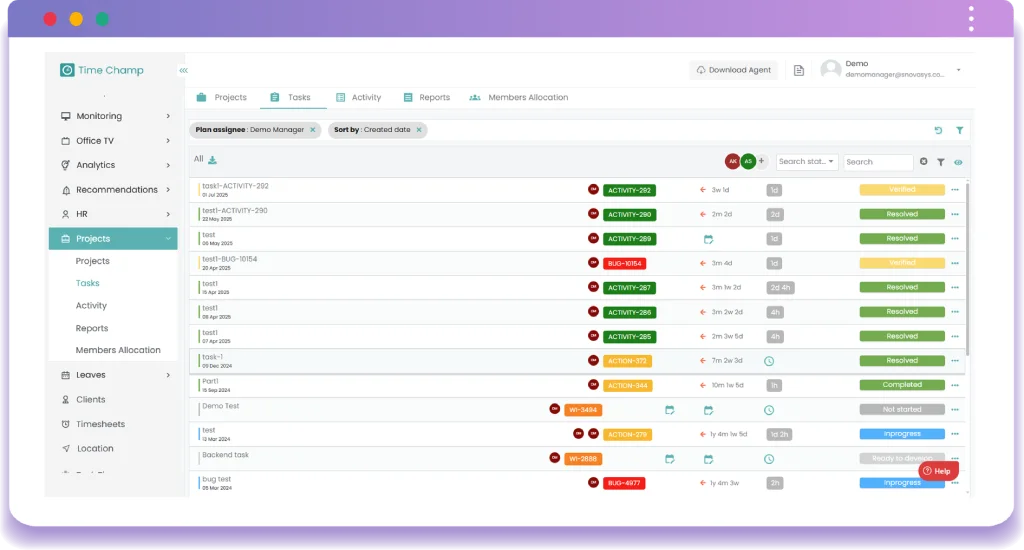What is Shift Management? Importance, Benefits & Challenges
When managing people in an industry that requires constant operations, shift management becomes a key element in effective workforce scheduling, e.g., in the healthcare sector, manufacturing industries, customer support, and the retail industry. With the growing demand for round-the-clock services, systematic and smart shift planning has become essential to a combination of operational, statutory, and employee health conditions.
The concept of shift management is the systematization of the working hours of employees in shifts so that their schedule can fulfill business needs and a company's aspirations. An efficient system prevents conflicts in the work schedule, makes it fair and improves the team's work. It also allows data-based decisions, increasing coverage without violating employee preferences.
The shift management system is currently going to be used more and more widely by businesses interested in automating the scheduling process, minimizing mistakes, and guaranteeing improved compliance and efficiency.
What is Shift Management?
Shift management refers to the executed method of planning, organizing, and controlling employees' schedules to guarantee optimal coverage, legality, and congruency with the business goals in terms of the various shifts.
Purpose and Scope
Shift management helps a firm manage its requirements, idle time, and quality services. It deals with the problem of full-time, part-time, or remote and on-site workforce, schedules employees most efficiently, and reduces conflict.
It ensures that the employees are not exhausted and that the work is correctly distributed. The night cover and weekend rotations or any other form of the working process can be ensured by a clear shift schedule, which would ensure the business's stability and the staff's happiness.
In addition, more advanced shift management functions offer reporting and the possibility to forecast rush times, facilitate labor efficiency, and adapt to spontaneous absence. This would allow teams to operate in a proactive rather than a reactive mode, becoming more agile and performing.
Along with that, correct shift planning means that the team feels better. When transparency into schedules and capabilities to swap shifts and request overtime are established, the more trusting and involved employees can be in their workplace.
Why is Shift Management Important?
- Offers Continuity: This is essential to businesses with 24/7 emergency care, hospitality, and logistics services.
- Enhances Workforce Productivity: Logically allocates the correct number of staff during a shift depending on demand.
- Minimizes Legal Penalties: Supports that the laws are adhered to concerning rest breaks, limitation of working shifts, and overtime provisions.
- Reduces Burnouts: Ensures an optimum workload and that employees have ample rest during shift changes.
- Improves Customer Satisfaction: There will be less waiting and an improved service due to the proper coverage.
- Increment of Workforce Visibility: Workers will know in advance the schedules to enhance communication and planning.
What Are the Benefits of Effective Shift Management?
- Boosts Productivity: The employees are productive due to definite shift patterns, and no overlapping of duties and wastage.
- Cost Optimization: The companies obtain a 12% reduction in overtime expenses and a 15% increase in workforce productivity.
- Reduces Absenteeism: The time can be fixed, thus decreasing absenteeism and raising responsibility.
- Improves Morale: Through this, employees attain improved morale since their preferences and availability are considered.
- Enhances Flexibility: Permits easy embracement of part-time, remote, and freelancing employees.
- Better Tracking of Performance: In the process of centralizing rosters, the performance of the shift is easier to calculate.
- Facilitates Hybrid Work: Shift planning can be used to facilitate a hybrid and remote workforce, especially in the setting of a post-pandemic environment.
- Disaster Preparedness: Allows shift reallocation in disaster cases and imposes negligible disruption to business.
How to Overcome Common Shift Management Challenges?
-
Human Error when Manual Planning
Spreadsheets are likely to overlap, cause conflicts, and miscommunication problems.
The answer to the problem: Implement a shift management system with automated notifications and templates.
-
Overstaffing and Understaffing
Too many or too few people are booked over the lines, resulting in losses or poor service.
Solution: Employ demand forecasts as part of your shift planning system.
-
Shift Fatigue and Burnout
Workers compelled to do either night work or long shifts face health challenges.
Solution: The rotation in shift work should be fair enough, and they should be given rest.
-
Labour Legislation and Enforcement
Some legal charges may be drawn up in case of any negligence in the number of hours or breaks.
Solution: Choose a shift management tool with embedded monitoring of compliance.
-
Inflexible Scheduling
The employees get frustrated because they cannot view the schedule.
Action: Provide self-service portals to request changes, swaps, or leaves.
-
Last-minute Absences or Dropouts
It may influence shift coverage and productivity.
Solution: Keep an array of contingent employees or reserves in the system.
How to Implement Shift Management in Organization?
-
Assess Operational Needs
Find the number of positions to be covered during the shifts and determine peak times or days.
-
Choose Adequate Shift Control Tool
Choose a shift management system that can accommodate the complexity and size of your business. Ensure that it ticks in harmony with the payroll and attendance systems.
-
Put in Employee Preferences
Do surveys, utilize important forms to realize what is available, and decrease demoralization of schedules.
-
Develop and Run the Shift Plan
Test various shift patterns, track their successes, and roll out to the organization.
-
Train Managers
The managers should know the tool's features, labor laws, and exceptions.
-
Fixed Automations and Set Rules
Automate the periods of rest and authorization regulations in the tool to save time and reduce errors.
How Does the Shift Management System Benefit Organizations?

With a powerful shift management system, scheduling can be transformed into a strategic advantage instead of a reactive one. In 2025, enterprises installed automated scheduling programs like Time Champ and experienced a 30% faster shift planning cycle and a 20% increase in resource optimization accuracy.
1. Smart Shift Scheduling
Auto-allocation of shifts can be done depending on the kind of employees, availability, and workload to minimize manual scheduling.
2. Employee Tracking Availability
Tracks the availability of the employees on a real-time basis to eliminate conflicts and over-booking.
3. Shift Exchange/Swap Portal
Allows employees to make shift-swapping requests and view manager approval through the portal.
4. Low-Damage Systems
Syncs shift scheduling with approved leaves to prevent overlaps or unapproved changes.
5. On-Time Shift Alerts/Notifications
Automatically sends alerts about upcoming shifts, shift changes, or missed punches so everyone stays informed.
6. Role-Based Access Controls (RBAC)
Allows team leads, managers, and HR to manage shift schedules with various permission levels based on their roles.
7. Checks Overtime & Compliance
Determines the violation of labor compliance and overtime ratios to meet the law and internal policy.
8. Dashboard of Visual Shift Calendar
A dashboard in color depicts a visual image of how shifts are allocated over departments and time.
9. Mobile-Friendly Interface
Enables employees and managers to view schedules, make updates, and respond anytime using mobile devices.
10. Attendance and Payroll Mobility
Connects attendance with time and pay records to ensure accurate and error-free payroll processing.

